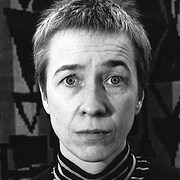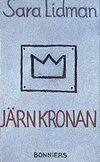Sara Lidman (1923–2004)
Auteur van Hjortronlandet
Over de Auteur
Fotografie: Sara Lidman 1965 Foto: Lufti Ozkök
Reeksen
Werken van Sara Lidman
Fåglarna i Nam Dinh : artiklar om Vietnam 5 exemplaren
Rapport fra Hanoi 2 exemplaren
Vänner och u-vänner 2 exemplaren
Marta, Marta og andre tekster 2 exemplaren
Linda 2 exemplaren
Fem diamanter 1 exemplaar
Marta, Marta pjäs i två akter 1 exemplaar
Jernbanan. [1 och 2] 1 exemplaar
Multebærlandet 1 exemplaar
Tagged
Algemene kennis
- Gangbare naam
- Lidman, Sara
- Geboortedatum
- 1923-12-30
- Overlijdensdatum
- 2004-06-17
- Geslacht
- female
- Nationaliteit
- Sweden
- Geboorteplaats
- Missenträsk, Sweden
- Plaats van overlijden
- Umeå, Sweden
- Opleiding
- University of Uppsala
- Beroepen
- novelist
- Organisaties
- Samfundet De Nio
Leden
Besprekingen
Prijzen
Misschien vindt je deze ook leuk
Gerelateerde auteurs
Statistieken
- Werken
- 37
- Leden
- 702
- Populariteit
- #36,077
- Waardering
- 4.1
- Besprekingen
- 14
- ISBNs
- 89
- Talen
- 7
- Favoriet
- 8




















But this isn't just a political novel - most of the story is to do with Didrik's relationship with his wife Anna-Stava, with his elderly parents, with the mysterious wet-nurse who turns up when Anna-Stava isn't able to feed their son, and with Didrik's absent foster-brother Naboth. All of which feed into our understanding of how the community works, what its values are, and how it makes rough-and-ready arrangements for looking after people who can't support themselves (widows and orphans are taken into the farmers' extended families, but treated as unpaid servants).
Lidman's text, which is full of broken sentences, dialect, and bits of biblical/liturgical language, was obviously a nightmare for the translator. Tate makes a pretty good job of it on the whole, but there are some odd choices here and there. The generic dialect she uses seems to be a mixture of Scots, Northern English and rural Shropshire - there's probably no good answer when translating dialect, and I'm sure it would have been a mistake to pin it down to somewhere specific, but the mixture does sound a bit artificial sometimes, and lacks internal consistency. In the religious language, she has a tendency to re-translate the Swedish rather than use corresponding passages from the AV, which must have saved valuable time, but undermines the effect of the familiarity of the language that Lidman was presumably trying to get.
I found this a very interesting book - a sort of communist Swedish Middlemarch, perhaps...… (meer)